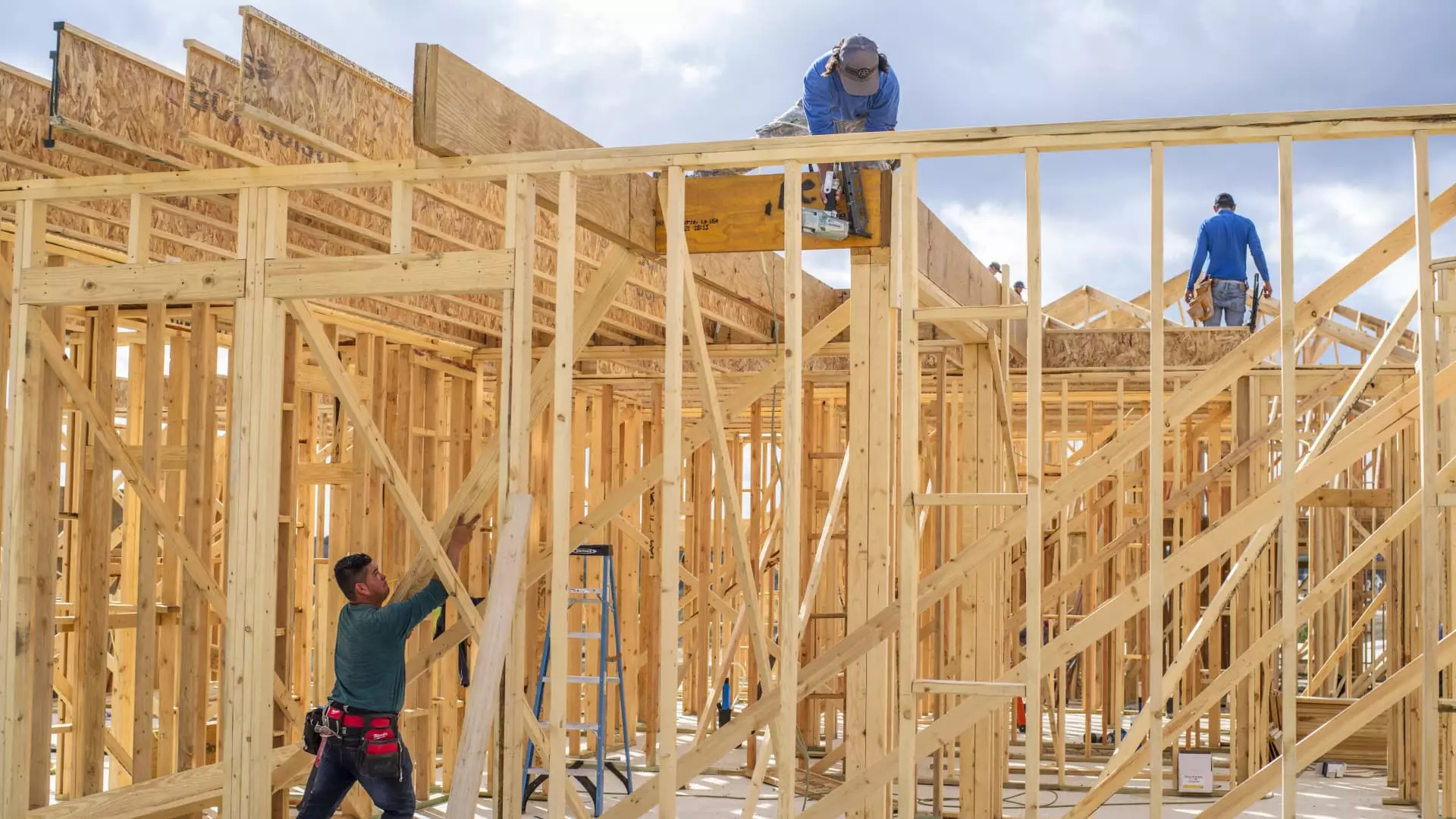Economic indicators within the U.S. housing market are showing troubling trends, particularly among single-family home builders. Recent data from the National Association of Home Builders (NAHB) reveals a worrying decline in builder sentiment, plummeting to its lowest point in five months. This downturn has been primarily attributed to escalating costs driven by tariffs, which are amplifying concerns over the affordability of new homes. The data paints a picture of a sector grappling with financial pressures, despite some cautious optimism regarding potential policy reforms.
The Housing Market Index (HMI), a vital barometer of builder confidence, has seen a significant drop of five points from January to February, landing at a disheartening reading of 42. This figure is critical as any reading below 50 signifies negative sentiment among builders. A year ago, the index registered slightly better at 48, suggesting a deteriorating outlook for the housing market. In articulating the sentiment’s decline, NAHB Chairman Carl Harris expressed concerns about the influence of tariffs on construction costs and the overarching unpredictability of policy decisions affecting development.
Delving deeper into the components of the HMI, the findings are sobering. Present sales conditions fell by four points to 46, indicating a shift in the immediate market dynamics. Additionally, traffic from potential buyers dipped by three points to a mere 29, which raises alarms about the overall demand for housing. Most strikingly, anticipated sales for the next six months plummeted by 13 points to 46, marking the lowest expectations since late 2023. Such declines suggest that builders are bracing for a sluggish market ahead, particularly as they approach the competitive spring selling season.
One of the most pressing challenges facing homebuilders is the persistently high mortgage rates that have crept above 7%. This increase follows a period where rates had previously dipped into the 6% range, placing an added burden on both builders and prospective buyers. These elevated rates, combined with rising home prices, are collectively undermining affordability, further constraining buyer activity. Homebuilders have taken note of the dwindling pool of buyers capable of navigating these challenges, with the ramifications echoing through the housing market.
Another pivotal factor influencing builder sentiment is the looming threat of tariffs. With approximately 32% of appliances and 30% of softwood lumber sourced internationally, builders are understandably anxious about potential cost escalations. NAHB chief economist Robert Dietz emphasized how uncertainty surrounding these tariffs exacerbates builders’ concerns over profit margins and pricing structures. Although proposed tariffs against Canada and Mexico were delayed, the anticipation of increased material costs is placing additional stress on the already fragile market.
As builders witness a reduction in buyer demand, the trend is prompting a reevaluation of sales strategies. The percentage of builders reducing prices has decreased to 26% in February, down from 30% in January. This decline in price reductions, the lowest since May 2024, reflects a shift in market sentiment and potentially diminished efficacy of previous incentives designed to attract buyers. Builders are increasingly recognizing that in a high-price, high-rate environment, traditional sales incentives may no longer hold sway over a segment of the market that is fundamentally priced out.
The current landscape for U.S. homebuilders is fraught with challenges. With escalating costs, high mortgage rates, and a reduced pool of buyers, the path forward remains unclear. Builders are holding onto faint hopes for pro-development policies and regulatory reforms, yet the immediate outlook for 2025 appears pessimistic. The combination of these factors signals a potential slowdown in new single-family housing starts, raising concerns about the overall health of the housing market as it braces for the upcoming spring season. The situation calls for careful monitoring, as the decisions policy-makers make now may significantly impact future housing supply and demand dynamics.


Leave a Reply